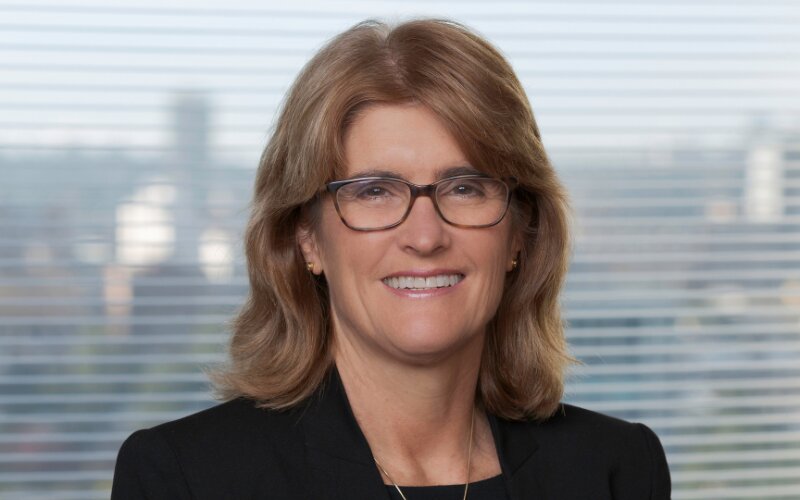Queensland's State of Origin team had eight series wins in a row; the RBA had 10 hikes in a row, but there's no victory shield to raise for Governor Dr Philip Lowe.
On Tuesday the RBA elected to pause the cash rate at 3.60% at its April meeting, citing slower economic growth and a “substantial slowing in household spending”.
The RBA’s aggressive tightening strategy has brought down inflation, currently at 6.8% over the year to February 2023, down from a peak of 8.3% in December 2022.
In his post meeting statement, RBA Governor Dr Philip Lowe said a range of information has suggested inflation has peaked in Australia.
"Growth in the Australian economy has slowed, with growth over the next couple of years expected to be below trend," Dr Lowe said.
"There is further evidence that the combination of higher interest rates, cost-of-living pressures and a decline in housing prices is leading to a substantial slowing in household spending.
“The board recognises that monetary policy operates with a lag and that the full effect of this substantial increase in interest rates is yet to be felt.”
However, the RBA stressed the decision to pause this month did not necessarily signal the end of interest rate hikes in its entirety - it may be too early to pop the Champagne cork.
Major economists agree the March quarter inflation data (released 26 April) will play a decisive role in determining whether the central bank has the right to resume raising rates if inflation doesn’t behave.
“Some further tightening of monetary policy may well be needed to ensure that inflation returns to target,” Dr Lowe said.
However, the Governor's statement has taken a more 'dovish' tone versus only a couple of months ago, with the addition of 'may well be needed'.
"The Board expects that further increases in interest rates will be needed over the months ahead to ensure that inflation returns to target and that this period of high inflation is only temporary," Dr Lowe said in the same closing paragraph in February.
Here’s how the experts reacted to the April rate pause from various sectors of the economy.
Housing industry
SQM Research
SQM Research Managing Director Louis Christopher said it would be unusual for the RBA to pause in April, then make a u-turn and hike once more in May.
“We are at the end of a planned process by the RBA and other central bankers,” Mr Christoper said.
“No central banker goes on pause with the plan to lift rates one month thereafter.
“They won’t lift rates unless they get a really nasty surprise on the upside of inflation.”
In regard to the Australian housing market, Mr Christoper believes it will recover this year with prices expected to rise between 3% to 7%.
“The market is going to recover, driven by the Sydney housing market,” he said.
“There will be more first home buyers in the market place looking to get out of the rental crisis.
“Once there is more evidence the downturn is over, property investors are going to jump into the market, looking for their hedge against inflation.”
PropTrack
PropTrack Senior Economist Eleanor Creagh said the decision to keep the rate steady made sense.
“The substantial tightening that has been pushed through to date saw conditions in the housing market rebalance quickly last year, with prices falling from peak levels in most parts of the country,” Ms Creagh said.
“Prices nationally fell for nine consecutive months but have now reversed their falling trend.
“Now the RBA has paused its tightening cycle, home prices will likely continue to stabilise as some of the uncertainty buyers have experienced with respect to borrowing capacities and mortgage servicing costs reduces.
“If stock levels remain constrained, the bounce is likely to continue to firm.”
Real Estate Institute of Queensland
REIQ CEO Antonia Mercorella welcomed the RBA’s decision to leave cash rates on hold this month.
“Around 650,000 households in Queensland are mortgaged and it’s likely the RBA’s aggressive tightening cycle is already weighing heavily on many mortgage holders,” Ms Mercorella said.
“A pause in interest rate hikes is an appropriate response at this time, allowing households and businesses a few moments to pause and assess their expenditure.
“It also gives first home buyers a chance to stabilise their borrowing capacity.”
The major banks
ANZ
Despite wrongly predicting this month’s cash rate, ANZ Senior Economist Felicity Emmett said further tightening is likely.
“There were changes to the final paragraph which confirm that the RBA is more data dependent, downgrading the outlook from more hikes ‘will be needed’ to more hikes ‘may well be needed, This change in language was necessitated by the pause,” Ms Emmett said.
“It would be odd of the Board to have left rates unchanged if they were sure more rate hikes were required.
“But, we continue to think inflation will prove persistent enough to require the RBA to tighten monetary policy further in the months ahead.”
ANZ remains in favour of the terminal rate reaching 4.10%.
Westpac
Westpac economists successfully forecast the RBA would pause at the April meeting given the change in the global financial landscape.
Westpac Chief Economist Bill Evans said although a pause was expected this month, it’s likely a final 25 basis point increase will be handed down in May.
“The decision is consistent with the classic approach that policy needs to move swiftly to push rates into the contractionary zone but, once there, a central bank that meets as frequently as the RBA can pause to assess the cumulative impact of the policy,” Mr Evans said.
“Along with the economy still operating with a near 50-year low in the unemployment rate and the slow expected progress in achieving the inflation target, we continue to expect that the Board will see the need for one final 0.25ppt increase in the cash rate.”
NAB
NAB CEO Ross McEwan believes more pain is headed homeowners' way, tipping two more rate rises in the coming months.
“You are starting to see the early signs it is slowing down, and the changes are biting into the consumer and what they are spending money on,” Mr McEwan told the Australian Financial Review.
“I have been out in the economy and there is still lots going on out there, and I think there is probably two rate rises to go.”
Advertisement
Buying a home or looking to refinance? The table below features home loans with some of the lowest interest rates on the market for owner occupiers.
| Lender | Home Loan | Interest Rate | Comparison Rate* | Monthly Repayment | Repayment type | Rate Type | Offset | Redraw | Ongoing Fees | Upfront Fees | Max LVR | Lump Sum Repayment | Extra Repayments | Split Loan Option | Tags | Features | Link | Compare | Promoted Product | Disclosure |
|---|---|---|---|---|---|---|---|---|---|---|---|---|---|---|---|---|---|---|---|---|
5.54% p.a. | 5.58% p.a. | $2,852 | Principal & Interest | Variable | $0 | $530 | 90% |
| Promoted | Disclosure | ||||||||||
5.49% p.a. | 5.40% p.a. | $2,836 | Principal & Interest | Variable | $0 | $0 | 80% |
| Promoted | Disclosure | ||||||||||
5.64% p.a. | 5.89% p.a. | $2,883 | Principal & Interest | Variable | $250 | $250 | 60% |
| Promoted | Disclosure | ||||||||||
5.64% p.a. | 5.89% p.a. | $2,883 | Principal & Interest | Variable | $248 | $350 | 60% |
| Disclosure |
Image by Brett Jordan via Unsplash

Ready, Set, Buy!
Learn everything you need to know about buying property – from choosing the right property and home loan, to the purchasing process, tips to save money and more!
With bonus Q&A sheet and Crossword!







 Bea Garcia
Bea Garcia
 Denise Raward
Denise Raward
 Harry O'Sullivan
Harry O'Sullivan
 Emma Duffy
Emma Duffy
 Brooke Cooper
Brooke Cooper

